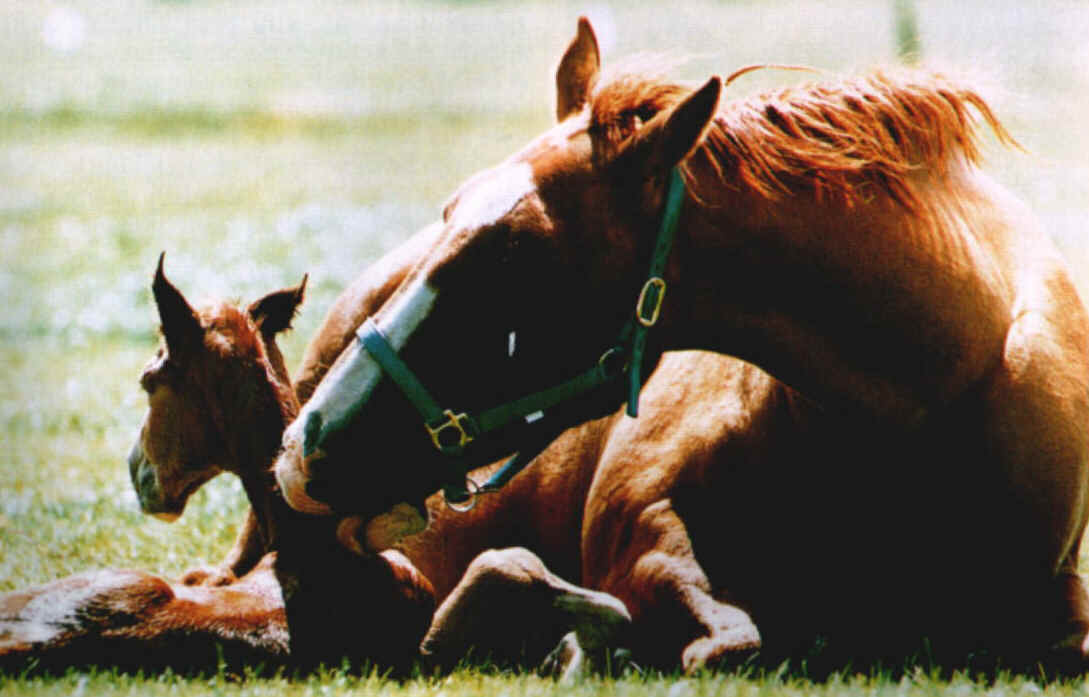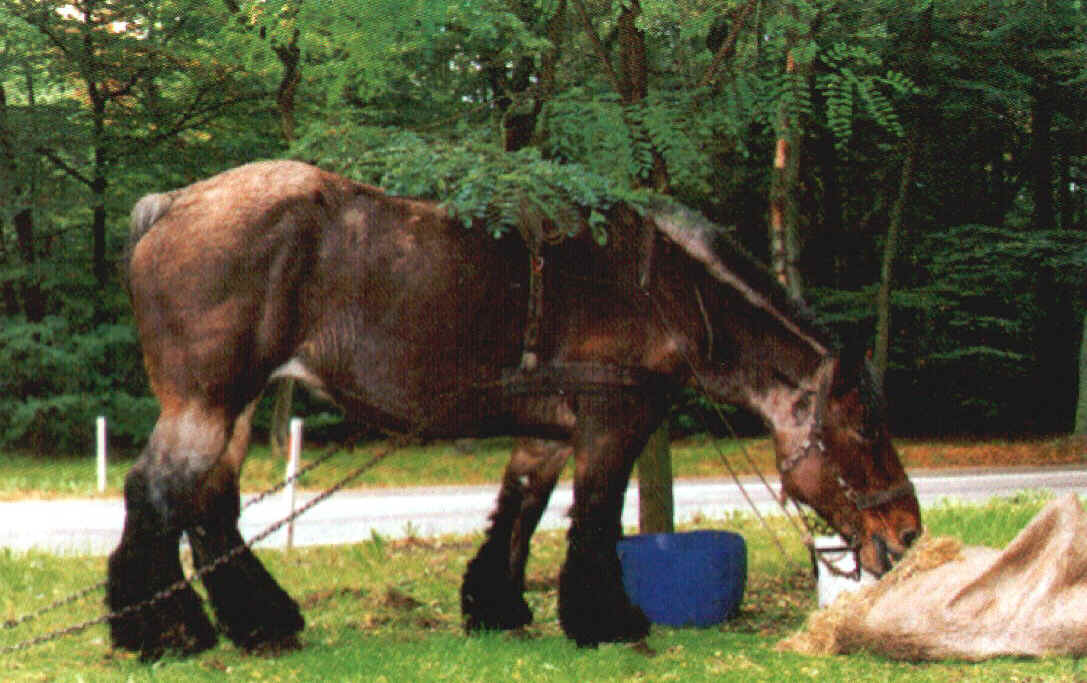



OLDENBURGER
Breed of all-purpose riding and show horse. The Oldenburg was developed as a coach horse by Count Anton Gunther von Oldenburg in the province of Oldenburg (now Germany) in the 17th century. Since then, breeding programs have modified some characteristics of this horse to keep pace with changing needs for its use. The Oldenburg is a tall horse, standing about 167.5 to 178 cm (about 66 to 70 in, or 16.5 to 17.5 hands) high at the withers (the high part of the back, located between the shoulder blades). Its large, powerful body has a straight back and a wide, deep chest. The short, strong legs have well-defined joints with sound hooves. The long neck is muscular, and the head straight, with bold eyes, alert ears, and flared nostrils. It matures early, usually in three years. The tail is set low, typical of a coach horse. The coat of the Oldenburg is usually colored bay (reddish), gray, or black. Count von Oldenburg produced the first Oldenburg horse by crossing a half Andalusian horse with Freisan horses. In the 18th century, the breed was crossed with Barb and Neapolitan horses to produce an Oldenburg that would be good for riding as well as for pulling coaches. In the 19th century the Oldenburg was mixed with Cleveland Bay and Thoroughbred horses to develop a more refined look. Between World War I (1914-1918) and World War II (1939-1945), it was used primarily for farming, then crossed with Norman and Hanoverian horses in the 1950s to produce a lighter show horse with greater freedom of movement. Oldenburg stallions today are examined in their third autumn to ensure they conform to strict breed standards before they are allowed to mate.
Belgium Heavy Draft horse - Cleveland Bay - Clydesdale - Dutch Warmblood - Gelderlander - Holsteiner - Irish Draught - Lippizaner - Missouri Fox Trotter - Morgan Horse - Mule - Mustang - Oldenburger - Palomino - Percheron - Peruvian Paso - Pinto - Quarter Horse - Selle Francais - Standardbred - Tarpan - Tennessee Walker - Trakehner - Ungulate (onevenhoevigen) - Zebra